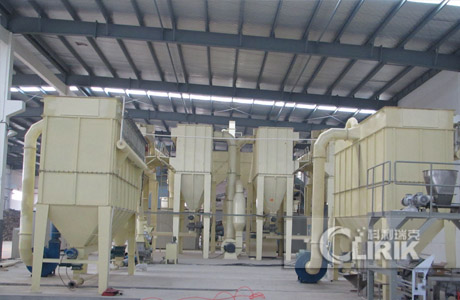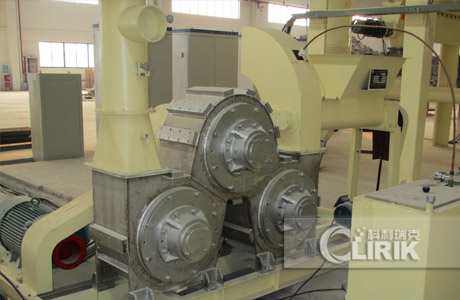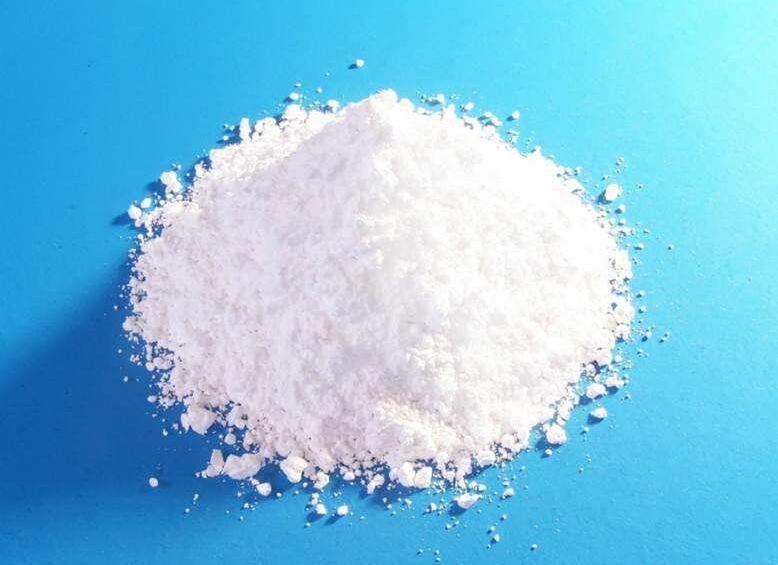The purpose of modifying the surface of calcium carbonate by the powder modifier is to improve the application performance of calcium carbonate, broaden the application range and market of calcium carbonate and lead some new application fields through the modification of the surface of the powder.
What are the application fields of modified calcium carbonate?
1. Application of modified calcium carbonate in the field of polyvinyl chloride (PVC)
Compared with ordinary calcium carbonate, modified calcium carbonate particles are evenly distributed in the original state of particles without agglomeration. It has excellent compatibility and dispersibility with PVC resin, is easy to plasticize, does not stick to rolls, and has excellent processing properties. It is beneficial to improve the processing efficiency, and the breaking strength and elongation of the product are obviously improved, and the physical and mechanical properties are good.
2. Application of modified calcium carbonate in the field of polypropylene (PP)
Using powder surface modifier to modify the surface of light calcium carbonate can reduce the oil absorption value of calcium carbonate to 22% and the contact angle to 68.6°. The modified calcium carbonate is filled into polypropylene and dispersed well in polypropylene, which can alleviate the downward trend of tensile strength to a certain extent, so that the elongation at break of the composite material can reach 28.47% and the impact strength can reach 6.7kJ/m2 .
3. Application of modified calcium carbonate in the field of high-density polyethylene (HDPE)
The powder modifier is used to mechanochemically modify heavy calcium carbonate. The aluminate coupling agent has a certain bonding effect on the surface of calcium carbonate particles. After modification, the dispersibility of calcium carbonate particles is significantly improved; The increase in the amount of modified calcium carbonate in the density polyethylene (HDPE) reduces the abrasion and friction work of the composite material, and improves the anti-friction performance; when the amount is 8phr, the composite material has the best mechanical properties, and the tensile strength and impact strength are respectively Increased by 4.46% and 24.57%.
4. Application of modified calcium carbonate in the field of low-density polyethylene (LDPE)
The activation index of modified calcium carbonate is 99.71%, the oil absorption value is 46.19mL/100g, the final sedimentation volume is 2.3mL/g, and the viscosity of the mixture of 10g modified calcium carbonate and 100mL liquid paraffin is 4.4Pa·s. The modified calcium carbonate is filled into low-density polyethylene (LDPE). When the modified calcium carbonate content is 10%, the composite material has better mechanical properties.
5. Application of modified calcium carbonate in the field of ABS plastics
After the surface modification of the powder modifier, the dispersibility of nano calcium carbonate in the organic medium is improved, and the surface is changed from hydrophilic to lipophilic. Using it in ABS resin can improve the mechanics of ABS resin. Properties such as impact strength, tensile strength, surface hardness, bending strength, and thermal properties such as heat distortion temperature.
6. Application of modified calcium carbonate in the field of polyester (PBAT)
Surface modification of calcium carbonate, the modified calcium carbonate filling amount can reach 50%, and the comprehensive mechanical properties of the composite product are good. In the composite material, the modified calcium carbonate particles are completely infiltrated and covered by the PBAT resin matrix, and there is no dissolution phenomenon. At the same time, the mutual fluidity between the two is improved.
7. Application of modified calcium carbonate in the field of radiation crosslinked EPDM (EPDM)
In situ modification of calcium carbonate, the dispersibility of modified calcium carbonate has been improved; in radiation cross-linked EPDM, the surface of modified calcium carbonate has a chemical reaction with EPDM through oleic acid group, so that calcium carbonate participates in the cross-linking of EPDM In the network, the tensile strength, 100% fixed elongation stress and Shore A hardness of the composite material are improved, so that calcium carbonate has the reinforcement in the radiation cross-linked EPDM.
8. Application of modified calcium carbonate in the field of polylactic acid (PLA)
The surface modification of calcium carbonate by coupling agent increases the specific surface area of calcium carbonate, and thus increases the contact area with the substrate. When stressed, it will produce more silver streaks and plastic deformation zones and absorb a large amount of energy to achieve The purpose of toughening and strengthening.
9. Application of modified calcium carbonate in the field of PVC coated fabrics
Modified heavy calcium carbonate can improve the compatibility of the polyvinyl chloride paste resin compounding system. In the same amount as ordinary heavy calcium, it can obtain a relatively low viscosity and enhance the adhesion to the polyester base fabric. It can reduce the amount of adhesive and improve the feel of the coating material. With an increase of 40%, it has no adverse effect on the processing performance, physical and mechanical properties, and thermal welding performance of the material.
10. Application of modified calcium carbonate in the field of polyvinyl chloride (PVC) fire hose
Compared with ordinary calcium carbonate, modified calcium carbonate particles are uniformly distributed in the state of primary particles without agglomeration, and some of them are in the state of nano particles. Therefore, filling in polyvinyl chloride (PVC) fire hoses can not only improve the processing performance of the system , And endow the product with better physical and mechanical properties to achieve the effect of toughening and strengthening.
11. Application of modified calcium carbonate in the field of PVC cable material and flame retardant masterbatch
Use aluminate, titanate coupling agent, stearic acid to modify heavy calcium carbonate, and use this heavy calcium carbonate composite filler to prepare PVC cable material and flame retardant masterbatch, with excellent performance, and compound modification The use of agents will become one of the development trends of surface modification of heavy calcium carbonate.
12. Application of modified calcium carbonate in the field of polyether ether ketone
Using sulfonated hyperbranched polyaryl ether ketone to modify calcium carbonate whiskers can improve the dispersion of calcium carbonate whiskers in the matrix, enhance the interaction between the two phases, and reduce the melt viscosity of the composite material in the processing temperature range. At the same time, The Young's modulus, flexural modulus and toughness of the obtained composite material are all improved.
13. Application of modified calcium carbonate in the field of room temperature vulcanization (RTV) one-component silicone rubber sealant
The surface modification of ultrafine calcium carbonate with silane coupling agent, the modified calcium carbonate has a better reinforcing effect on the sealant, its tensile strength is 0.57MPa, and the maximum strength elongation is 159.60%.
14. Application of modified calcium carbonate in the field of polyurethane sealant
Using methyl methacrylate (MMA) and silane coupling agent KH570 to copolymerize modified calcium carbonate, the modified calcium carbonate has a water contact angle of 60°, a sedimentation value of 1.36ml/g, and good dispersion in polyurethane , It shows thixotropic properties after being mixed with polyurethane, and the improvement of the mechanical properties of polyurethane is better than that of unmodified calcium carbonate.
15. Application of modified calcium carbonate in the field of silicone rubber
Nano calcium carbonate can replace white carbon black to fill silicone glue to a certain extent. It is the main production material of silicone glue. Nano calcium carbonate is used as a filler and reinforcing agent for silicone glue, which can greatly reduce the cost of products. Improve the processing performance of the product, greatly improve the mechanical properties such as the tensile strength and tear strength of the rubber. By controlling the crystal form, particle size and surface treatment of the nano-calcium carbonate, the product can obtain excellent thixotropy and anti-flow properties. Hang performance.
16. Application of modified calcium carbonate in the field of natural rubber vulcanizates
Using resorcinol and hexamethylenetetramine to modify calcium carbonate, the mechanical properties of modified calcium carbonate natural rubber vulcanizates are significantly improved than that of unmodified calcium carbonate natural rubber vulcanizates. Calcium carbonate, natural rubber vulcanizate, the tensile strength is increased by 130%, the tensile strength is increased by 101%, and the tearing strength is increased by 70%.
17. Application of modified calcium carbonate in the field of styrene butadiene rubber (SBR)
For the use of carboxylated polybutadiene (CPB) modified calcium carbonate as a reinforcing agent for SBR, the performance of the vulcanized rubber is 60% higher than that of unmodified calcium carbonate, and the tensile stress is increased by 300%. 70%, the tear strength is increased by 30%.
18. Application of modified calcium carbonate in the field of semi-steel radial tire innerliner
Adding 40 parts of modified calcium carbonate to the inner liner of semi-steel radial tires can improve the airtightness of the rubber, and has little effect on the flexural resistance and processing performance of the rubber. From the tire factory test results, the airtightness of the inner liner using 40 parts of modified calcium carbonate is 30% higher than that of the ordinary inner liner, and the cost is reduced by 3.65 yuan/kg. The high speed and Durability is not affected.
19. Application of modified calcium carbonate in the field of papermaking fillers
The starch-coated modified calcium carbonate is used as a papermaking filler. The modified calcium carbonate has strong shear resistance and high retention rate, which makes the paper sheet strength performance higher, and the decline in strength performance is significantly slowed.
20. Application of modified calcium carbonate in the field of reconstituted tobacco
Calcium carbonate is modified with sodium hexametaphosphate and citric acid (mixing ratio is 1:l). The ash content of modified calcium carbonate added to reconstituted tobacco leaves is 8.25% higher than that of commercial calcium carbonate. Conventional smoke The indicators and sensory evaluation results are better than commercial calcium carbonate.
21. Application of modified calcium carbonate in the field of powder coatings
Modified calcium carbonate acts as a skeleton in the powder coating, which can increase the thickness of the coating film and improve the wear resistance and durability of the coating. Generally, modified calcium carbonate is more expensive than other inorganic fillers, so it can reduce the cost of powder coatings while increasing its powdering rate and spraying area.
22. Application of modified calcium carbonate in the field of latex coatings
The modified nano-calcium carbonate is used to prepare latex coatings with a PVC content of 43%. The coatings with modified nano-calcium carbonate have good surface smoothness, compactness, and stain resistance, scrubbing resistance, and aging resistance. It has been greatly improved. Among them, nano-calcium carbonate modified with stearic acid and sodium sulfonate has a greater impact on tensile strength, while nano-calcium carbonate modified with stearic acid and titanate has a greater impact on stain resistance and scrubbing resistance. Sexual influence is significant.
23. Application of modified calcium carbonate in ink field
The ink prepared with modified calcium carbonate has better body and viscosity, has good printing performance, dries quickly, and has no side effects. Due to the small particles, it exhibits excellent dispersibility, transparency, excellent gloss and hiding power in ink products, as well as excellent ink absorption and drying properties, so the printed products are delicate and the dots are complete. Especially after the extensive use of resin binders in inks, modified calcium carbonate has almost replaced other fillers due to its excellent stability.
24. Application of modified calcium carbonate in the field of toothpaste
Using silica to coat micron spherical calcium carbonate particles, the toothpaste friction agent calcium carbonate is surface-modified, and the modified calcium carbonate is added to the toothpaste under the same abrasion value. The capacity has been significantly improved.
The surface modification of calcium carbonate powder must be based on the mechanism of surface modification. At the same time, considering the base material, main formula and technical requirements of organic polymer products in downstream products, after comprehensive consideration, a reasonable calcium carbonate surface modification is selected. Only by determining the surface modification process and equipment can we produce qualified activated calcium carbonate products on this basis.

 Shanghai Clirik Machinery Co., Ltd.
Shanghai Clirik Machinery Co., Ltd. specializes in the production of various
calcium carbonate grinding mill and calcium carbonate powder modification machine for processing 30-3000 mesh calcium carbonate powder with different fineness. Welcome to leave a message online or consult on WhatsApp:
008613512155195.



